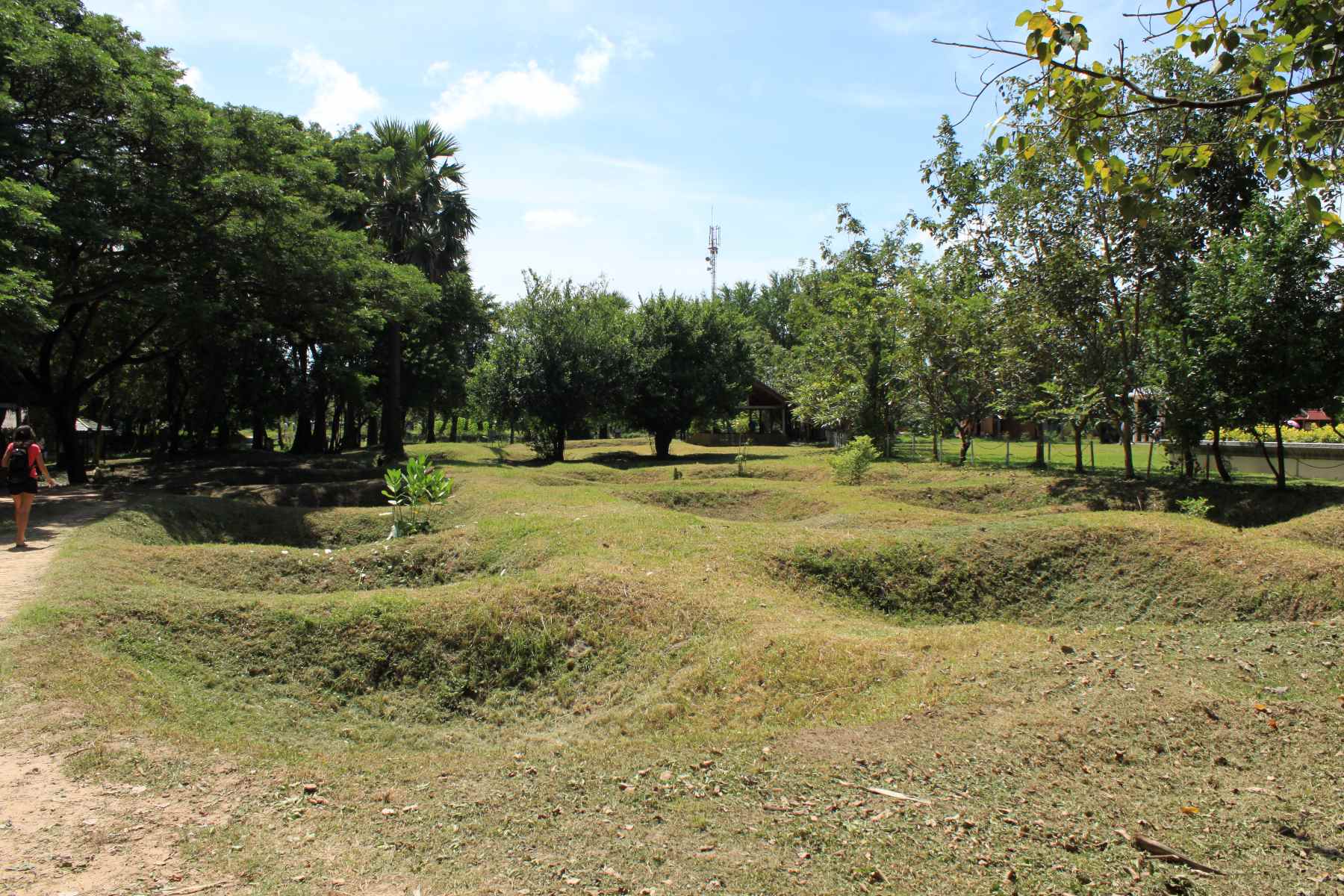The Untold Stories Of Cambodia’s Killing Fields

Cambodia's Killing Fields hold a dark chapter in history. These sites, scattered across the country, are where millions of Cambodians lost their lives under the Khmer Rouge regime. Visiting the Killing Fields offers a somber yet essential glimpse into the past. The most well-known site, Choeung Ek, near Phnom Penh, serves as a memorial to those who perished. Walking through these fields, you will see mass graves, bone fragments, and a chilling stupa filled with skulls. This experience is both heart-wrenching and eye-opening, reminding us of the resilience of the human spirit. Understanding this history is crucial for appreciating Cambodia's journey toward healing and peace.
The Chilling History of Cambodia's Killing Fields
Cambodia's Killing Fields hold a dark chapter in the country's history. These sites serve as a reminder of the atrocities committed during the Khmer Rouge regime from 1975 to 1979. Visiting these places can be a somber yet enlightening experience, shedding light on the resilience of the Cambodian people.
Choeung Ek Genocidal Center
Choeung Ek, located just outside Phnom Penh, is one of the most infamous Killing Fields. This site was once an orchard but became a mass grave for thousands of victims.
- Memorial Stupa: This towering structure contains over 5,000 human skulls, arranged by age and gender. It stands as a stark reminder of the lives lost.
- Mass Graves: Numerous pits dot the landscape, each representing a mass grave. Some still contain fragments of bone and clothing.
- Audio Tour: The center offers an audio tour that provides detailed accounts of the atrocities, narrated by survivors and historians.
Tuol Sleng Genocide Museum
Originally a high school, Tuol Sleng was converted into Security Prison 21 (S-21) by the Khmer Rouge. It became a place of torture and execution for thousands.
- Prison Cells: The tiny cells where prisoners were held in inhumane conditions are still intact. Walking through them gives a sense of the suffering endured.
- Photographs of Victims: Walls are lined with haunting photographs of the prisoners, many of whom were children. Their eyes tell stories of fear and despair.
- Torture Devices: Various instruments of torture are on display, showing the brutal methods used to extract confessions.
Killing Fields of Battambang
Battambang, Cambodia's second-largest city, also has its own Killing Fields. These sites are less visited but equally significant.
- Wat Samrong Knong: This ancient pagoda was used as a prison and execution site. Today, it houses a memorial to the victims.
- Ek Phnom Temple: Near this temple, mass graves were discovered. The serene surroundings contrast sharply with the site's grim history.
- Memorial Stupa: Similar to Choeung Ek, Battambang has its own stupa filled with skulls and bones, serving as a somber reminder.
The Killing Fields of Siem Reap
Siem Reap, known for the Angkor Wat temples, also has its own dark history. The Killing Fields here are less known but equally poignant.
- Wat Thmey: This pagoda contains a small memorial with skulls and bones of the victims. Monks here often share stories of the past.
- Angkor Conservation Center: While primarily a conservation site for artifacts, it also has exhibits related to the Khmer Rouge era.
- Local Tours: Various local guides offer tours that include visits to lesser-known Killing Fields, providing a deeper understanding of the region's history.
The Resilience of the Cambodian People
Despite the horrors of the Killing Fields, the Cambodian people have shown incredible resilience. Their stories of survival and rebuilding offer hope and inspiration.
- Survivor Stories: Many survivors share their experiences through books, documentaries, and personal tours. Their tales are both heartbreaking and uplifting.
- Rebuilding Communities: Numerous NGOs and local initiatives focus on rebuilding communities, providing education, and preserving history.
- Cultural Revival: Traditional arts and culture are experiencing a revival, with many young Cambodians embracing their heritage while acknowledging the past.
Reflecting on Cambodia's History
Cambodia's Killing Fields hold deep historical significance. Visiting these sites offers a profound understanding of the country's tragic past. The stories of survivors and the remnants of the Khmer Rouge regime serve as powerful reminders of the resilience of the Cambodian people. Exploring these areas isn't just about seeing the sites; it's about connecting with the human experiences behind them.
While the memorials and museums can be emotionally challenging, they are essential for preserving history and educating future generations. By visiting, you contribute to the ongoing efforts to remember and honor those who suffered. Cambodia's journey from this dark chapter to its present-day vibrancy is a testament to its strength and hope. When planning your trip, consider including these important sites to gain a deeper appreciation of Cambodia's rich and complex history.

